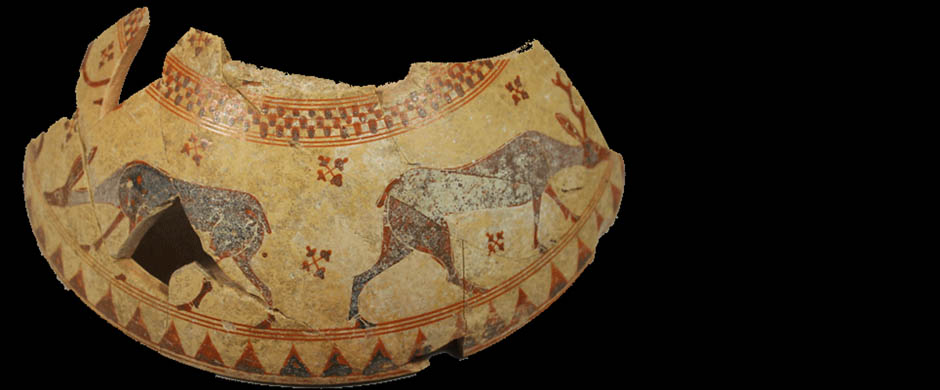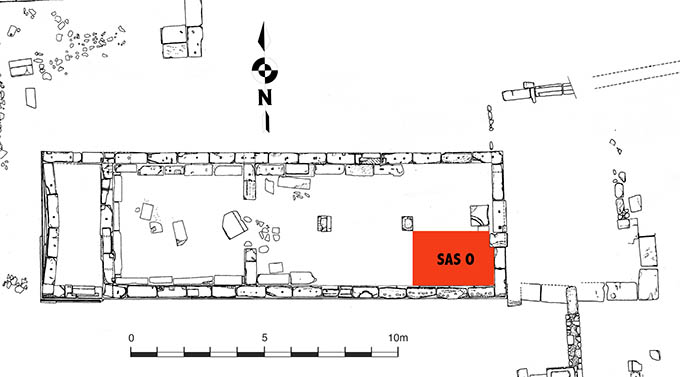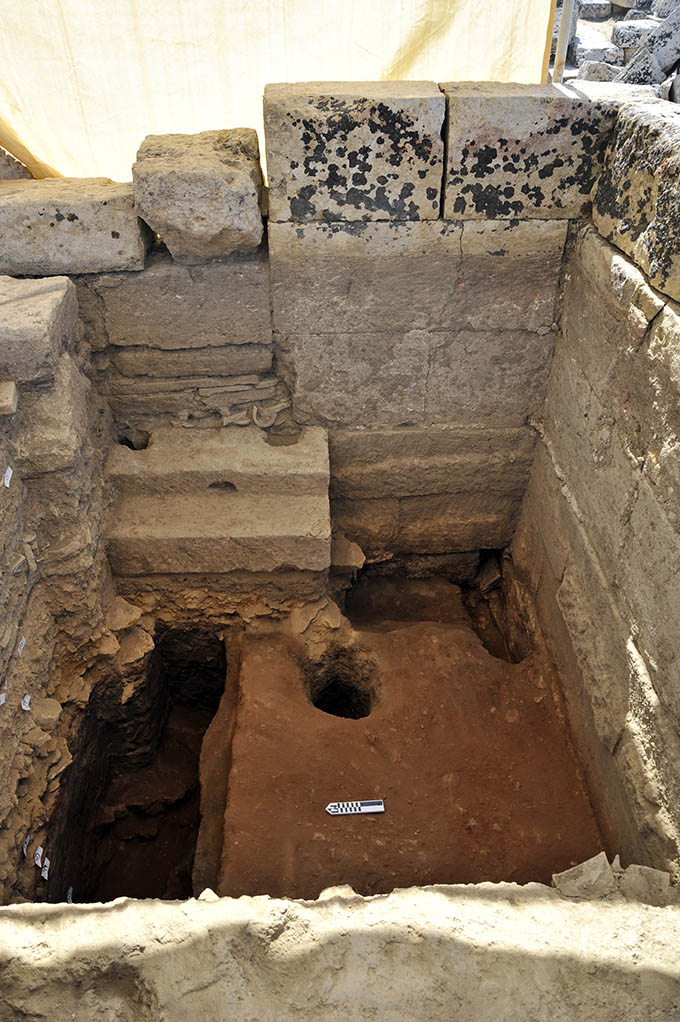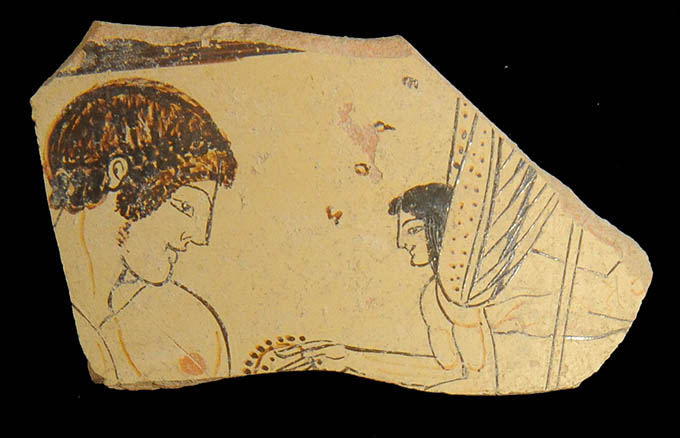 | In the Field
| In the Field

IFA Excavations at Selinunte
Summary of Excavation Results, 2012
In May and June we carried out our sixth campaign of excavation in the main urban sanctuary. Excavation this season consisted of the opening of a trench (Trench O, 2.62 x 3.43 m) in correspondence to the SE corner Temple R’s cella, including part of the door that gave access to this building [Figure 1]. By the end of the season, the entire stratigraphic sequence was excavated down to bedrock in the northern half of the trench [Figure 2].

Figure 1. State plan of Temple R with indication of Trench O. © Institute of Fine Arts, NYU.

Figure 2. View of Trench O. © Institute of Fine Arts, NYU.
Our first finding this season was the identification of a massive fill inside the building, which has raised the level of the floor by more than one meter, but was not documented before. This fill is datable to ca. 300 BCE and has sealed the Late Classical, Classical, and Archaic levels of Temple R. The fill consists of three levels, and it contains a significant amount of roof tiles fragments at the top, and amphorae fragments towards the bottom. In the fill was also found fragments of Archaic and Classical votive objects, including part of an Attic white-ground lekythos stylistically close to Douris and depicting Eros offering a wreath to a youth [Figure 3].

Figure 3. Fragment of Attic white-ground lekythos (P12.15). © Institute of Fine Arts, NYU.
The first level identified under the Hellenistic fill, consisted of a floor datable to roughly the end of the fifth century, and in phase with the pilasters extant in the cella. This floor sealed a layer of burnt material, bearing clear signs of violent destruction, including a bronze sheet smashed on the ground and over twenty arrowheads. This destruction is best associated with the Carthaginian sack of Selinus in 409.
Beneath the Classical level and the preparation for the fifth century floor, which was significantly raised above its original level, was the well-preserved Archaic floor. Embedded in this floor, a terracotta figurine of a veiled goddess was found, wearing a mantle and a low polos, of the Daedalic style: this figurine is more likely a representation of the divinity of Temple R. This is best identified with Demeter, based on the discovery in front of the temple last year of a polychrome terracotta bust of a goddess wearing a polos, a type often associated with Demeter and Kore; one may also add the considerable number of piglet bones among the remains from animal sacrifice found in the area of our building. At the level of the Classical and Archaic floors, against the east and south interior walls, we found a significant number of votive depositions, which included vessels for libations, weapons, terracotta figurines, a faience amulet of a bull, and two fragments of a bone aulos [Figure 4]. This aulos, datable to ca. 580-570 based on its association with a Middle Corinthian amphoriskos, offers significant evidence for the performance of music and ritual dancing in association with cult in this part of the sanctuary.

Figure 4. Sections of bone aulos (IV12.1). © Institute of Fine Arts, NYU.
Particularly significant was the discovery, under the fill of stone chips that served as foundation for the floor, of two large postholes with a precise EW orientation. These two postholes may tentatively be identified with the central supports of an early building, whose floor and walls were uncovered in 2010 in the excavation of Trench L. At the level of the floor of this early structure, smashed in the foundation trenches for the eastern wall of Temple R, we found a large conical oinochoe close in style to Late Protocorinthian-Early Transitional vases, depicting an animal frieze with two grazing deer. This vase undoubtedly represents a votive dedication of some significance, datable to the first generation of life of the Greek colony.
Clemente Marconi, The Institute of Fine Arts, New York University